Join More Than 50,000+ Subscribers and get latest camera news and rumors
NEW CAMERA VIDEOS ON YOUTUBE
|
By admin, on June 9th, 2025
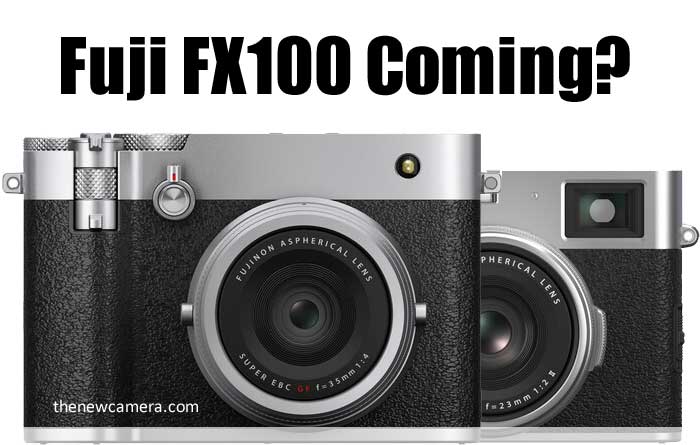
Fuji has a long history in creating amazing cameras, starting from the APS-C line of cameras and the medium format GFX series, all of which deliver exceptional image quality and retro aesthetics.
The Fuji X-100 VI camera with its 40 megapixel sensor has very high demand worldwide, and most of the time, due to the supply chain issues, the camera remains backordered. Fuji recently announced their first medium format compact camera, the GFX 100 RF, which uses a 102 megapixel medium format sensor-based camera. Both of them showcase Fujifilm’s ability to innovate in the premium compact camera space.
However a new patent surfaced over the web of 40 mm F2 full frame compact lens the lens is specifically designed for a full frame sensor it has sparked an intense speculation about a new addition to Fujifilm in a full frame compact camera, may be to complete against the existing like a Leica Q3 with approximately the same focal length having name the Fuji FX 100. And We do believe that the Fujifilm FX100 could be Fujifilm’s answer to the Leica Q3, as they already possess all the capabilities required to create a retro full-frame compact camera.
Let’s explore the POSSIBILITIES of the arrival of the Fuji FX100 full-frame compact camera.
Fujifilm’s History and Stance on Full-Frame Cameras
Fujifilm has long charted its own course in the mirrorless world, choosing to double down on its beloved APS-C “X” line and its high-end GFX medium-format system rather than wade into the full-frame fray. As recently as 2023, during INTERVIEWS, they have CLEARLY SAID that they have no plans to enter the crowded full-frame interchangeable-lens mirrorless market dominated by Canon, Nikon, and Sony. Their reasoning is clear: APS-C (X Series) offers a compact, cost-effective alternative, while medium format (GFX Series) provides superior resolution and dynamic range for professionals. Building a FULLFRAME interchangeable LENS system from scratch means designing new mounts and glass, then convincing photographers to invest in yet another lineup, possibly at the expense of their current X and GFX customers. It’s a risky move that could or may end up cannibalising their lineup of GFX and Z series cameras.
That said, Fujifilm isn’t ruling out playing in the full-frame sandbox entirely—a fixed-lens full-frame compact camera, as we have discussed above the Fiji FX100, would not contradict Fujifilm’s stance. It would be a distinct product category, akin to the Leica Q3 (60MP full-frame sensor, 28mm or 43mm f/1.7-2 lenses) or Sony RX1R II (42MP full-frame, 35mm f/2 lens): FX100 will let them dip a toe into full-frame territory without overhauling their entire lens portfolio. It’s a smart way to test the waters—pairing their signature film simulations and sleek design with a full-frame sensor, while staying true to the systems their users already know and love.
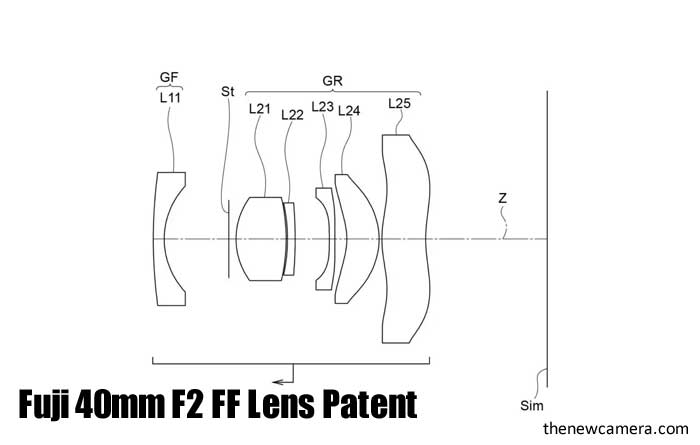
Fuji 40mm f/2 Full-Frame Lens Patent
Back in June 2025, Japanese website ASOBINET spotted something intriguing in Fujifilm’s patent filings: alongside new GF 20mm f/2.8 and XF 15mm f/2.8 designs, there was a 40mm f/2 lens specifically laid out for a full-frame sensor. That little detail is probably the strongest hint yet that Fuji is toying with the idea of a full-frame compact. A 40 mm normal-view optic makes perfect sense here—it’s roughly the classic field of view you’d get with Leica’s Q3 at 43 mm f/2, so it’s equally happy capturing street scenes, travel snaps, or environmental portraits. And unlike lugging around a monster telephoto, a 40 mm f/2 can stay snug and pocketable without sacrificing speed or sharpness.
Of course, patents aren’t product guarantees—they’re often filed just to stake an R&D claim or to keep rivals at bay. But the timing, right after the buzz over the X100VI and GFX100RF, and the very specific full-frame design all point to the fact that Fujifilm is taking the compact full-frame space seriously. If it does materialize, this camera could sit squarely between the Leica Q3 (around $6,660) and the still-cherished Sony RX1R II ($3,300-ish on the used market), offering Fuji’s renowned film simulations, sleek styling, and top-tier image quality in a pocket-friendly package.
Fuji FX-100 will be a Sweet Spot in the Fuji Lineup
Think of the FX100 as the “sweet spot” in Fujifilm’s family. It wouldn’t step on the toes of the X100VI or GFX100RF—instead, it fills the gap between them. The X100VI is beloved by street shooters and travel photographers for its APS-C sensor and fixed 35 mm-equivalent lens, while the GFX100RF is built for pixel-peepers, packing a 102 MP medium-format sensor and a 28 mm-equivalent f/4 optic. A full-frame FX100 would bridge those worlds: better low-light performance and greater dynamic range than the X100VI, and a faster lens and smaller body than the GFX100RF.
Fuji FX100 – Expected Core Specifications
- 42–61MP Full-Frame BSI CMOS Sensor
- Fixed 40mm f/2 Lens with Nano-GI Coating
- 6.2K30, 4K60 & 4:2:2 10-Bit Video, F-Log2 Support
- AI-Based Phase Detection Autofocus with Subject Tracking
- In-Body Image Stabilization (6–7 Stops)
- Hybrid OVF/EVF with 5.76M-Dot OLED Panel
- 3.15″ 2.1M-Dot 2-Axis Tilting Touchscreen LCD
- ISO 50–100000, Up to 15-fps Continuous Shooting
- Built-in 4-Stop ND Filter & Digital Teleconverter (50mm, 63mm Modes)
- SD UHS-II Slot; USB-C, HDMI, Wi-Fi & Bluetooth
- Retro Design with Leaf Shutter & Dedicated Exposure Dials
- Weather-Sealed (Likely IP52 Rating)
- Estimated Price: $2,000–$3,000
See, the possibility of the Fuji FX100 camera does exist, and it has been fueled by the latest June 2025 patent of the 40mm f/2 full-frame lens by Fujifilm itself. They already have a decent, proven track record of building premium compact cameras with the success of the Fuji X100 series and the recently announced GFX100 RF series compact camera. Now you have to understand one thing — that even if they announce a fixed-lens full-frame camera, it does not violate their stand against interchangeable-lens full-frame systems. One more thing — that Fuji’s research and development doesn’t take much time to make a patent into reality. If they really want to announce a perfect competitor to the Leica Q3 or the RX1R series, they won’t take much time. They will for sure announce a full-frame compact camera sometime in 2026, specifically in the later part of the year. And yes, rumor mill first denies this concept of the FX100 model, and after a month or two, they will publish a breaking news “Fuji FX Compact coming”, that’s what they always do.
Stay tuned for more updates coming
Follow us for more updates and get LIVE RUMORS –> FACEBOOK | TWITTER | INSTAGRAM to get live news — > get live camera news + –> See More Fuji Rumors
At TheNewCamera.com, we’re dedicated to keeping you informed about the latest camera news. The article “Fuji FX100: The Possibility of a Full-Frame Compact Camera in 2026” was first published on11:49 am, Monday, 9 June 2025, Greenwich Mean Time (GMT) by thenewcamera.com team
By admin, on June 5th, 2025

The Fuji X-E5 official teaser video is now official, Fuji X-E5 is coming on June 12, 2025. We already have a bunch of leaks and specifications. The upcoming camera will feature a 40MP APS-C X-Trans CMOS 5 HR Sensor and In-Body Image Stabilization (IBIS), as you can only see a glimpse of the camera in the teaser.
There is another rangefinder-style series that is important in the history of the X series.
Stay tuned, more updates are coming
Follow us for more updates and get LIVE RUMORS –> FACEBOOK | TWITTER | INSTAGRAM to get live news — > get live camera news + –> See More Fuji Rumors
By admin, on May 15th, 2025

Which one is the Best Camera for Recording Video – Panasonic Lumix S1 II vs. Nikon Z6 III? this the the most asked question in my DM and mailbox from the day of the announcement of the Panasonic S1 II camera. I wish I had a one-size-fits-all all answer, but there just isn’t one…
Why Panasonic S1 II better, and what about the Nikon Z6 III?
Panasonic Lumix DC-S1 II’s video capabilities “surpass” the Nikon Z6III in its broader range of video features, such as Open Gate recording (6K/30p, 5.1K/60p) and as we all know that the open gate recording is not available in the Nikon Z6 III camera., extensive monitoring tools (vectorscope, anamorphic lens support and in camera desqueez), although we all know that now Nikon has also included waveform support, timecode in their camera but some specical features that may fall under the “must have” list of a PRO cinematographer may be absent in the Z6 III. So, it actually at the end depend on users what they want from the camera and the budget boundaries are.
and let’s explore the 4 K high frame rate mode, in the 4K/120p with a smaller crop (1.17x vs. Z6III’s APS-C). However, there are some features that only the Nikon Z6 III has at this moment, the Z6III can record 6K/60p in N-Raw, which the S1II cannot, as its 6K is limited to 30fps and internal NRAW, which is about to arrive in S1 II in paid firmware update section. The S1II’s strengths lie in its creative flexibility and toolset, but the Z6III’s 6K/60p capability gives it an edge for high-frame-rate, high-resolution video.
| Feature / Spec |
Panasonic Lumix DC-S1II |
Nikon Z6III |
| Price |
$3197 – B&H Store |
$2096 – B&H Store |
| 6K Recording |
6K/30p (Open Gate), 5.9K/60p (16:9), 5.1K/60p (Open Gate) |
6K/60p (N-Raw) |
| High-Frame-Rate Video |
4K/120p with 1.17x crop |
4K/120p with APS-C crop (~1.5x) |
| Rolling Shutter Performance |
~12.8ms |
~9.4ms (better for fast motion) |
| Recording Formats |
ProRes, ProRes RAW, internal 10-bit |
N-Raw, ProRes RAW (via external) |
| Internal fan |
Yes |
No |
| Monitoring Tools |
Vectorscope, waveform, anamorphic desqueeze, LUTs, timecode |
Waveform and timecode available
(No vectorscope or anamorphic tools) |
| Audio Features |
24 Bit standard Audio input
32-bit float audio support with XLR |
Standard audio support
no XLR option |
| Creative Flexibility |
High (Open Gate, multiple aspect ratios, pro tools) |
Moderate (focus on resolution and frame rate) |
| Crop at 4K/120p |
1.17x |
APS-C crop (~1.5x) |
| Overall Advantage |
Better for filmmakers, flexible workflows |
Superior for 6K/60p high-res, high-speed video |
When buying a camera for filmmaking or wedding cinematography, here’s an oversimplified way to look at it:
See, we have three major factors supporting the Panasonic S1 II camera, and here they are: Open Gate modes, advanced monitoring tools, and a less severe crop at 4K/120p, which provide creative flexibility for PRO filmmakers. However, I don’t overlook the Z6III’s ability to record 6K/60p in N-Raw, a significant advantage for users needing high-resolution, high-frame-rate video without cropping. The S1II’s 6K is capped at 30fps, and while it offers 5.9K/60p and 5.1K/60p, these don’t directly match the Z6III’s 6K/60p capability. The Z6III’s edge in 6K/60p while noting the S1II’s strengths in other areas, ensuring accuracy and relevance.
Follow us on our social pages FACEBOOK | TWITTER | INSTAGRAM, to get LIVE News and Panasonic Rumor
By admin, on May 14th, 2025
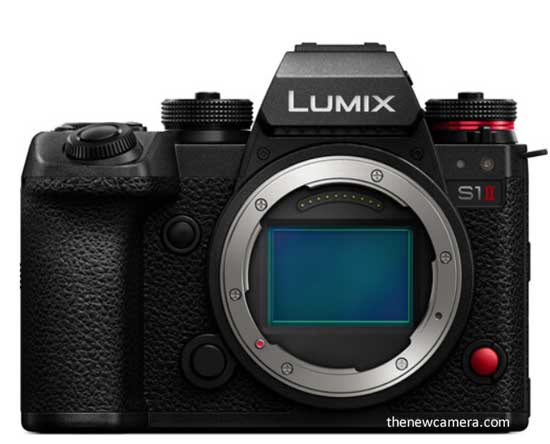
Panasonic finally announced the Panasonic S1 II camera. The camera features 24 Mp BSI CMOS sensor that we have seen in the Nikon Z6 Mark 3, continuous speed up to 70 frames per second including RAW and 1.5 seconds of pre-burst capture which is longest among competitors, and also it includes open gate 6K video recording with full-width 5.9K and up to 4K 60p recording, 4K 120 APS-C with slight crop, and 6G-SDI over HDMI as well as they have included a built-in fan for extended recording. So these are the basic features we have with the camera.
Get Panasonic S1 II Camera from Amazon.com | B&H Store
Key specifications
- 24MP partially-stacked BSI CMOS sensor
- Up to 70fps shooting, including Raw
- 1.5 seconds pre-burst capture
- 96MP multi-shot mode with in-cam combination and motion correction
- 10-bit HLG HEIF still images
- In-body stabilization rated at up to 8.0EV of correction
- Open-gate 6K video up to 30p
- Full-width 5.9K or 4K up to 60p
- 4K/120p video with slight crop
- 6K Raw output over HDMI
- Built-in fan for extended recording
- External SSD output for video
- V-Log with 15-stops in DR Boost mode
- Arri C-Log3 paid upgrade option
- 4-channel and 32-bit float audio with XLR2 adapter
- Bluetooth timecode sync
The Panasonic S1 II will ship in June 2025 at a recommended price of $3199. That’s way too high compared to the Nikon Z6 III camera , which is available for $2096.
Panasonic S1 II Press Release
Panasonic Announces Two New Full-Frame Mirrorless Cameras – LUMIX S1II and LUMIX S1IIE – and New LUMIX S 24-60mm F2.8 Lens
Newark, N.J. (May 13, 2025) – Panasonic is pleased to announce the expansion of its renowned LUMIX S Series with the introduction of two new models, the LUMIX S1II and S1IIE. These cameras are designed to offer exceptional photographic and videographic capabilities, characterized by remarkable image quality, dynamic color representation, and significant advancements in video technology.
Meticulously crafted for professional photographers and videographers, the LUMIX S1II features a newly developed 24.1MP full-frame partially stacked CMOS image sensor and is powered by an advanced-generation Venus Engine. This synergy enables faster readout speeds and processing, supporting high frame rate recording in formats such as 4K120p and 5.8K 60p. (*1) For superior dynamic range, the Dynamic Range Boost mode delivers up to 15 stops (*2) in V-Log at frame rates below 30p. Photographers can also take advantage of high-speed continuous shooting at up to 70 frames per second (*3) with SH / SH pre-burst shooting up to 1.5 seconds allowing the capture of even the most fleeting moments.
Elevating workflow efficiency, the LUMIX S1II enhances creative flexibility and streamlines content production. The highly-acclaimed Open Gate feature now supports additional formats beyond 6K30p–including 5.1K60p–unlocking even more options for creators. An upcoming firmware update will introduce multiple frame marker displays, providing further tools for precise and flexible framing.
The LUMIX S1IIE, joins the second-generation S1 series, maintaining the celebrated design and ergonomic excellence of the S1II and S1RII, offering potential for creative exploration. It is equipped with a 24.2MP sensor inspired by the characteristics of the LUMIX S5II, ensuring exceptional image quality tailored for diverse shooting conditions. Incorporating many of the standout features from the S1II, the S1IIE positions itself as a comprehensive tool for creative projects. Notably, it introduces a new Cinemascope video format (2.4:1), available in various frame rates without cropping, up to 60p.
Panasonic anticipates the LUMIX S1IIE will become a preferred choice for those seeking upgrades in ergonomic design and refined engineering.
With the debut of the LUMIX S1II and S1IIE, Panasonic continues to empower creators within the S1 Series. Both new models are designed to support the pursuit of self-expression through elevated performance and versatility.
The LUMIX S1II and S1IIE camera will be available starting late June at valued channel partners.
LUMIX S1II Main Features
High framerate recording and wide dynamic range with a newly developed partially stacked sensor
- Adopts a newly developed 24.1MP full-frame, partially stacked CMOS image sensor
- Supports LUMIX’s first 5.1K 60p high-speed recording option, along with other high-speed formats such as 4K 120p / 5.8K 60p for enhanced performance. (*1) (*4).
- Offers LUMIX’s first 15 stops of dynamic range video recording (*2) in V-Log at frame rates below 30p. (*4)
- High-speed continuous shooting, offering up to 70 fps (*3) with the electronic shutter “SH/SH PRE” mode, and an extended continuous shooting “H+ (High Speed Plus)” mode of approximately 10 fps with a mechanical shutter, allowing you to experience post view blackout-free shooting.
LUMIX S1IIE Main Features
Exceptional image quality tailored for diverse shooting conditions
- Adopts 24.2MP sensor inspired by the performance characteristics of the LUMIX S5II
- Supports 6K 30p (3:2) open gate video recording
- Offers 14+ stops of dynamic range video recording in V-Log
- High-speed continuous shooting, offering burst shooting up to 30 fps with the electronic shutter “SH/SH PRE” mode, and an extended continuous shooting “H+ (High Speed Plus)” mode of approximately 10 fps with a mechanical shutter, allowing you to experience post view blackout-free shooting.
LUMIX S1II and S1IIE Common Features
Enhanced core performance that unlocks new creative possibilities
- Redefined real-time recognition Phase Hybrid AF with improved eye and face detection and AI-driven tracking accuracy for people.
- Addition of the new AF recognition for ‘Urban Sports’, accurately capturing dynamic movements like breakdancing, skateboarding, and parkour.
- Enhanced 8.0-stop (*5) in-body image stabilization (B.I.S.) and newly developed cropless E.I.S. video distortion correction, which stabilizes without cropping the angle of view.
- ARRI LogC3 (*6) (*7) available for the first time for S series by using DMW-SFU3A Software Upgrade Key (sold separately). (*4)
- Supports 5.8K 30p / C4K 60p Apple ProRes RAW HQ / ProRes RAW internal recording to a CFexpress Type B card.
Outstanding reliability and efficiency
- High-resolution 5.76 million-dot electronic viewfinder (EVF) and a versatile 1.84 million-dot tilt and free-angle monitor and are equipped with a sturdy shutter mechanism rated for up to 400,000 cycles.
- Operating efficiently at temperatures as low as -10 degrees Celsius.
- Dual recording media options supporting SD and CFexpress Type B cards.
- Seamless integration with accessories such as the DMW-BG2 and DMW-XLR2.
Apps and software that seamlessly support workflow
- Compatibility with Capture One, making it work seamlessly with professional studio photography’s widely used editing software.
- Compatibility with Frame.io, enabling smooth progression from shooting to editing, as well as cloud sharing and collaboration.
- Supports LUMIX Lab, simplifying the transfer, editing, and color personalization of photos and videos for seamless smartphone integration and social media sharing.
- Updated ver.1.5 supports the following feature:
- Supports LUMIX Flow, which assists with storyboard creation, on-site checks during filming, and automatic data organization after shooting to support the video production workflow.
- Updated ver.1.1 supports the following features:
- Wireless connection
- Additional assist features (Wave form monitor / Vectorscope / False color)
- Mirroring monitor function
- Capable of setting distinct parameters for photography and videography and seamlessly transfer settings from one camera to another using an SD card, thus ensuring uniform settings across diverse camera models.
By admin, on April 22nd, 2025
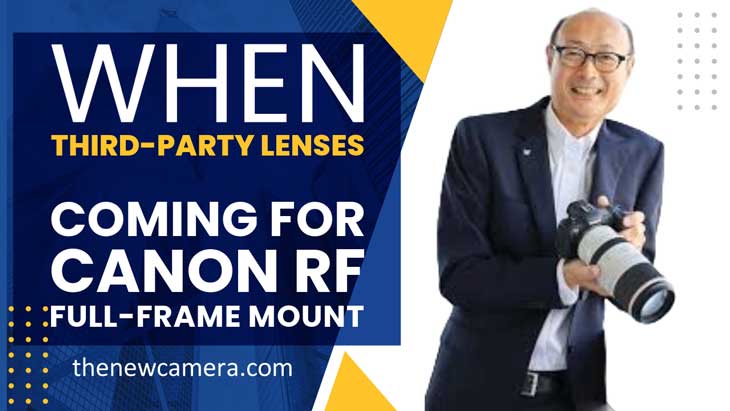
In a recent interview with Go Tokura, the Chief Executive Officer of Canon Imaging Group, IR and RDE, once again addressed the same hot topic that Canon users are actually eagerly waiting for: when will Canon open their full-frame RF mount for third-party lens makers?
The Burning Question
During an interview with RDE (Red Dot Edition), the interviewer asked Mr. Tokura if the majority of Canon third-party lenses made by Sigma and Tamron—those who have official access for making the lenses—are only available for APS-C cameras, not for full-frame. So, when are the third-party lenses coming for the Canon RF full-frame mount?
“As in previous years, I’m afraid we can’t disclose details about our agreements with third-party manufacturers. However, as you’ve likely noticed, the range of third-party lenses continues to expand each year, though we don’t closely monitor which specific models are being released. I would suggest keeping an eye on what third-party manufacturers are introducing to the market. And I suspect we’ll be having this same conversation again next year. — Mr. Tokura “
So What Does It Mean for Canon RF Users?
As usual, Tokura is not revealing anything very specific—neither confirming nor denying any news or information related to the development or the announcement of Canon third-party full-frame lenses. So these are the points that you should consider as the summary of the interview:
A Pattern of Carefully Controlled Growth by Canon
Canon already has a bunch of Canon RF full-frame lenses. Now, in total, they have 50+ RF lenses for the full-frame mirrorless system cameras. Even some manual focus lenses are also available from third-party lens makers. But as usual, only licensed third-party lens makers are allowed to make, sell, and distribute Canon full-frame lenses—and none of them as of now have received any sort of approval from the brand. The talks are going on behind closed doors.
Will 2025 Be the Year?
Canon never denied the possibility of Canon’s full-frame third-party lenses. It means they are in the process of approval. Canon took a lot of time in approving APS-C RF mount lenses, so they are not slamming the doors shut—they are taking their time and very selectively opening it strategically based on the market requirement and their profit margin.
So, for Canon users, they have to wait. But I do have hope that in the year 2025, we will see at least two or three full-frame third-party lens announcements from Sigma and Tamron.
source – imagineresource.com
The article was published at 9:05 am, Tuesday, 22 April 2025 GMT. By thenewcamera.com Team. You can Follow us on our social pages FACEBOOK | TWITTER | INSTAGRAM, If you have time –>see more live news + Canon rumors 24X7
See more
By admin, on March 24th, 2025

So finally, we got confirmation from the general manager of Fuji Film Professional Imaging Group that the Fuji X-Pro 4 is under development. In a recent interview with PetaPixel, he clearly stated that.
He noted that a simple upgrade with the latest processor or just a 40-megapixel sensor would be boring, indicating a major shift or upgrade in the upcoming X-Pro series camera.
Previous reports suggest that the upcoming X-Pro series camera will be called X-Pro 6 since Fuji will sync the name of the X-Pro series camera with others in 2026. It has been almost six years since the Fuji X-Pro 3 was released. The camera was announced in October 2019, and now it feels too old. Fuji has taken too much time, considering that even flagship cameras from other brands receive regular updates every four to five years. However, we have been waiting for more than six years now.
The Fuji X-Pro 3 had very low sales, and many owners of Fuji’s X-Pro 2 cameras decided not to upgrade their gear due to its unusual display setup. The Hidden flipping screen design of the X-Pro 3 failed to impress professional photographers. Due to the low sales of the series, Fuji decided to halt the research, development, and announcement of the next X-Pro camera for a while. And at one point of time, Fuji also realized that introducing a Hidden tilting display—which was practically useless—was a mistake. That so-called innovative design failed to impress professional photographers, ultimately leading to the X-Pro 3’s poor sales performance.
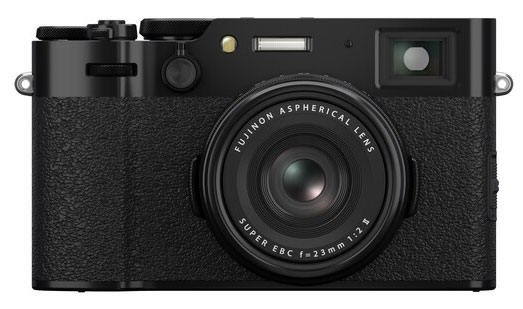
We have seen how Fuji handled the X100 series in its recent update. Not only did they add a 40-megapixel high-resolution sensor to that compact body, but they also introduced a 6-stop sensor-shift IBIS mechanism, making the Fuji X100VI one of the best street photography cameras ever created.
And that’s not all—the camera also includes a built-in 4-stop ND filter paired with a fast lens. What more could one ask for in a camera like this?
Similarly, Fuji is now focusing all its attention on developing the next version of the X-Pro series. Let’s hope that this time, we see a massive upgrade with significant changes. Stay tuned for more updates!
Follow us on our social pages FACEBOOK | TWITTER | INSTAGRAM, –> See More Fuji Rumors
By admin, on March 14th, 2025
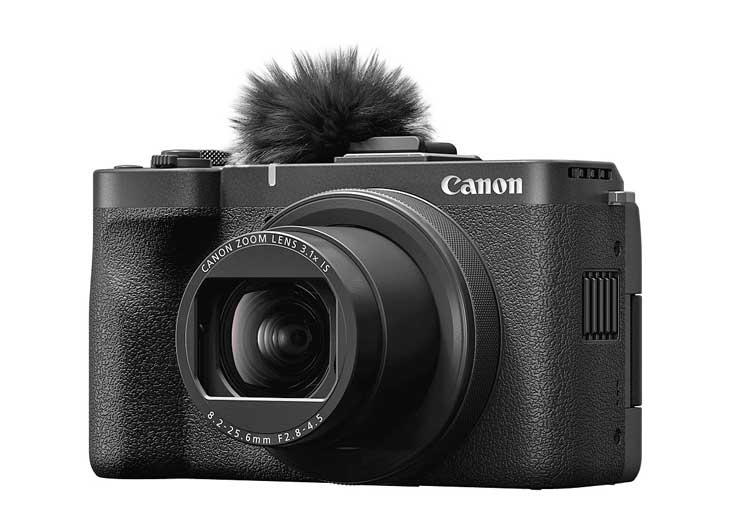
According to the latest rumor surfaced over the web, Canon will be announcing their Canon RV, Canon PowerShot V1, as well as Canon R50 V on or around March 26, 2025. Let’s explore the possible set of details we have related to these cameras.
1. Canon V1 Camera
The Canon V1 camera is a compact camera that is already announced in the Asian region. We already have the full core specifications and even a comparison with the Sony ZV-E10 camera. So, V1 is about to arrive officially in the USA and European region. Canon has already announced it in Asia, check details below
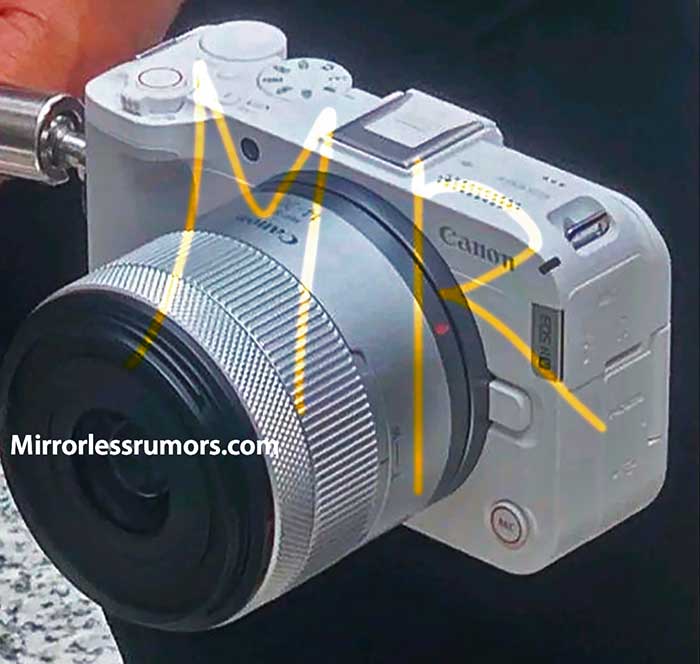
The image of the Canon RV camera was leaked a while ago, which gives a clear indication that the announcement is near. We have also analyzed the image of the leaked Canon RV camera. From the design, it looks like an entry-level interchangeable-lens mirrorless vlogging camera made for beginners. With its price and features, it will compete against the existing Sony ZV-E10 camera. Just like we have the Canon R100 camera in the entry-level zone for photographers, the Canon RV will be the beginner model for the vlogging mirrorless series.
3. Canon R50 V
Canon R50 V is also rumored to be announced on the same day, but we have the least information about this camera, and we are waiting for more details related to the same. So, we are very sure about two announcements—the first, which has already been announced in the Asian region, the Canon V1 compact camera, and the other, the Canon RV. As soon as I get more information, I will be updating you.
Stay tuned stay updated
Get LIVE RUMORS –> FACEBOOK | TWITTER | INSTAGRAM to get live news + Canon rumors 24X7
source Canonrumor.com
|
KEEP THIS BLOG ALIVE - Support New Camera Buy Canon Lenses, Buy Music CD or Digital Camera at amazon it helps this site, and you do not pay anything extra, it is just a way to help support this site.

|















